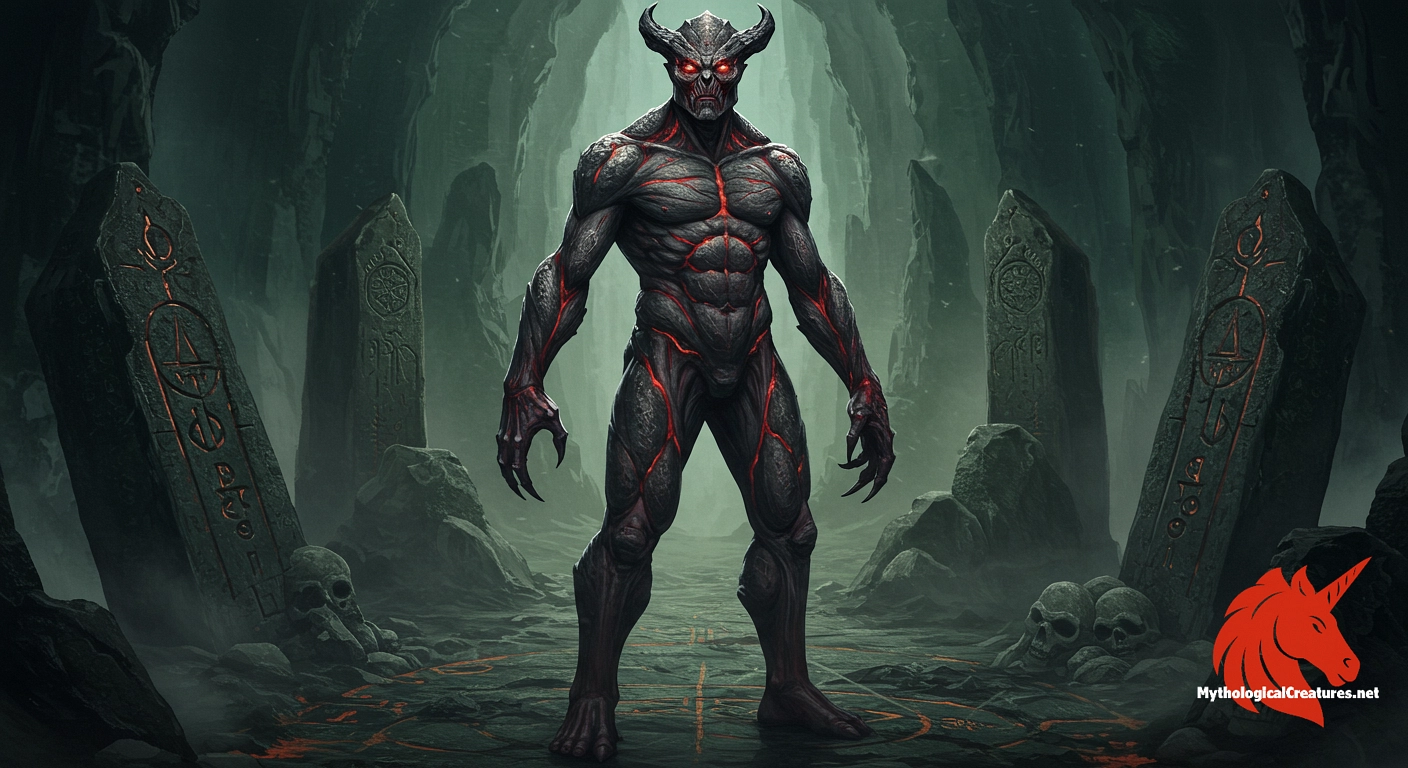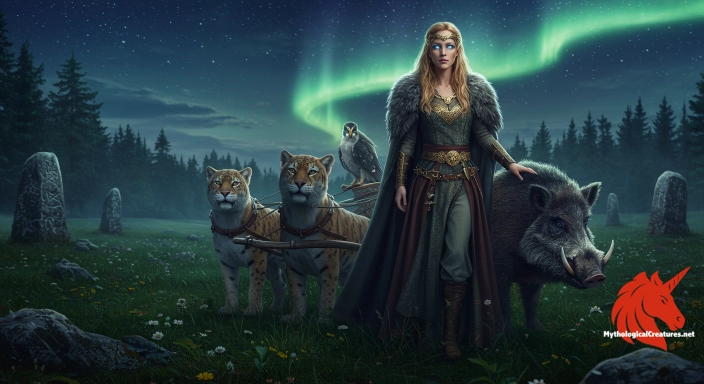Choronzon: Choronzon is a demon from the Western occult tradition, originating in the 16th-century magical writings of Edward Kelley and John Dee.

Choronzon
Choronzon - Represents the final great obstacle on the path to enlightenment in occult traditions
Origins & First Encounters
Choronzon emerged from the intricate writings of 16th‑century occultists, taking shape within the Enochian framework developed by John Dee and Edward Kelley. His initial portrayal was rooted in a system that valued cryptic language and hidden cosmologies, setting the stage for a multifaceted demonology. Over time, his character evolved into a symbol of chaos and transformation, capturing the imagination of later occult traditions. In the mystical system of Thelema, he became known as the dweller in the abyss, embodying the final barrier between the mundane self and transcendence. His role as an adversary whose destruction of the ego paves the way for enlightenment has intrigued both practitioners and scholars alike. The ambiguity of his nature, straddling the line between menace and opportunity, underscores a dual purpose in occult philosophy. Every encounter with Choronzon is portrayed as a rigorous test, urging the seeker to confront and dissolve the limitations of personal identity. His myth is deeply interwoven with the themes of dissolution and rebirth, making him a pivotal figure in the quest for higher knowledge. This enduring legacy resonates with those who see him as both a formidable challenge and a necessary catalyst on the path to spiritual evolution.
Source Texts & Tale Variants
The primary sources that mention Choronzon originate in the esoteric journals and manuscripts of John Dee and Edward Kelley, where his name first appeared in the context of Enochian magic. Subsequent occult documentation expanded his character, particularly in texts influenced by later ritual magicians. His re‐interpretation in the early 20th century by figures such as Aleister Crowley added further layers of symbolism to his narrative. The various manuscripts and grimoires that feature Choronzon provide contrasting depictions, reflecting the ambiguity of his nature and purpose. Diverse story variants emerge from different circles of occult practitioners, each adapting his myth to fit their own spiritual agendas. The evolution of his portrayal illustrates the fluid boundaries of demonology, where symbolic function often outweighs literal description. This body of literature not only charts his origins but also invites readers to explore the transformative role he plays in the mystical journey. The multiplicity of texts has ensured that his story is never fixed, but rather continuously reshaped by those who seek deeper occult truths. His enduring presence in magical literature demonstrates how layered and adaptable esoteric symbols can be across different eras.
Form & Powers
Choronzon is often envisioned as a manifestation of chaos, his physical form defined by constant flux and disintegration. Descriptions frequently depict him with an ambiguous, almost surreal anatomy that resists a single fixed image. His countenance may appear as a confluence of disjointed human and beastly features, melding horns, eyes that seem to pierce through darkness, and limbs that defy conventional symmetry. Art and ritual often emphasise his shifting form, symbolising the fragmentation of a unified self when confronted by ultimate chaos. Some portrayals suggest a size that can vary dramatically—at times looming as an overwhelming presence, while at others he lurks as a subtle, insidious force. His appearance is deliberately unsettling, intended to mirror the inner tumult of those who engage with his energies. The interplay of shadow and form in his depictions encapsulates the ephemeral nature of identity and order. Artists have repeatedly drawn on abstract and figurative elements to capture his elusive essence, thereby reinforcing his status as a being of perpetual transformation. Such descriptions serve to remind practitioners that encountering Choronzon is akin to facing the raw, unmediated forces of dissolution.
Regional Faces
Although Choronzon originates in the milieu of Western occultism, his myth has been reshaped to reflect the diverse spiritual and cultural landscapes in which he is invoked. Within British and American esoteric circles, he is primarily seen as the embodiment of the abyss, yet local adaptations often colour his narrative with regional symbolisms. In Southern European traditions, for instance, echoes of Mediterranean demonology mingle with his persona, infusing his character with a flavour of ancient, local myth. Modern occult practitioners in various countries tend to reinterpret his role in light of contemporary psychological insights, aligning his typology with the inner struggles of the modern self. Regional variations may emphasise either his menacing aspect or his transformative potential, influenced by the prevailing cultural attitudes towards chaos and order. In some instances, local languages and esoteric vocabularies have enriched his appellation, adding nuance to his myth. The adaptability of his character speaks to the universal appeal of the concepts he embodies, such as dissolution, renewal, and the confrontation of the self. Despite these variations, the core motif of the abyss remains a constant thread, anchoring his myth across different traditions. His evolving role in distinct cultural contexts highlights the dynamic nature of myth-making and the way in which ancient symbols continue to find relevance in new settings.
Cultural Parallels
Choronzon’s enigmatic role invites comparisons with various archetypal figures found in other mythological systems. His mandate to dismantle the ego and usher in transformation bears a striking resemblance to the destructive yet regenerative forces found in other spiritual traditions. Similarities have been noted with the serpentine chaos of ancient deities, where the act of dissolution is a precursor to cosmic rebirth. In parallel, figures like Mara in Buddhist thought function as embodiments of the obstacles that prevent enlightenment, echoing Choronzon’s role as a crucible for personal transformation. His ambiguous nature finds common ground with the concept of the shadow in Jungian psychology, where parts of the unconscious must be confronted to achieve wholeness. The tension between creative destruction and the reconstitution of the self is a theme that resonates across diverse cultural narratives. His myth, much like those of other trickster or transformative entities, demonstrates how the interplay of light and dark underpins the journey toward self‐realisation. These cultural parallels underscore the universality of the struggle between stability and change, a struggle that is central to the human experience. Through such comparative analysis, Choronzon emerges not simply as a demon, but as a multifaceted symbol whose properties transcend a single tradition.
Legacy & Modern Evolution
The evolution of Choronzon’s depiction reflects the broader shifts in occult thought from the Renaissance to the modern era. Initially confined to the labyrinthine solidities of Enochian magic, his role was reinterpreted during the development of Thelema, transforming him into a necessary catalyst for the dissolution of the self. This transition marked a move away from a strictly malevolent interpretation to one that recognised the potential for inner liberation through controlled confrontation. Contemporary occultists often invoke his image as a metaphor for the vital, if challenging, process of overcoming personal limitations. His legacy is evident not only in the ritual practices of ceremonial magicians but also in the realms of literature, art, and modern spiritual discourse. Over time, Choronzon has come to represent the paradox of destruction serving as a precursor to renewal, reflecting an enduring philosophical tension between chaos and order. Modern reinterpretations frequently draw on psychological insights to reframe his destructive power as symbolic of the necessary deconstruction required for personal growth. The dramatic reimagination of his myth highlights the inherent adaptability of esoteric symbols in response to evolving cultural and intellectual climates. His continued prominence in occult literature and popular culture stands as a testament to the timeless nature of his challenge—a reminder that true transformation often demands the courage to face one’s deepest voids.
Interesting Fact
Choronzon’s role in Thelema uniquely positions him as both a feared adversary and a necessary catalyst for profound spiritual transformation.
Quick Creature Info
Associations:
Our Mythic Legendary Rating:

Habitat:
Supernatural Powers:
Physical Attributes:
Abilities:
Behavior:
Lore:
Related Creatures, Tales or Lore
- AApollyon
- AAbaddon
- SSamael
References
Discover Another Mythical Legend You May Not Have Heard Of?
Uncover the mysteries of ancient folklore and expand your knowledge of legendary beings from cultures around the world.
Dare to Meet the Freyja....
Curated by the Mythological Creatures Team (rev. May 2025)
